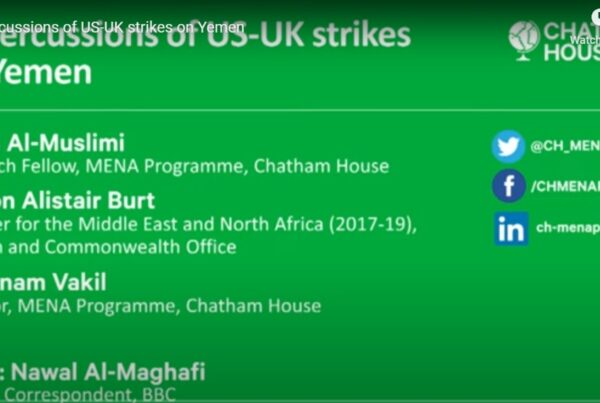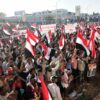Yemen’s political parties, along with all new and traditional elements in Yemen, diverge and differ to the point where their agendas, methods and goals conflict. They do find a common denominator, however, in the role of youth and their importance in the political process. This importance does not, however, prevent them from excluding Yemeni youth entirely from any sort of real participation in drafting the country’s future, after it was abandoned by these very political forces and parties.
The 2011 youth revolution constituted what might be the biggest shake-up in the history of these traditional forces. Their ability to become institutionalized waned as a result of the new political situation that came with the Gulf initiative. This was the case both in the first phase — which limited the agreement to the traditional parties; and in the second phase — which worked to restore the balance of these traditional forces rather than dismantling them. The second phase paved the way for new political players that did not differ in any fundamental way from the forces that were already present.
Besides this, the diversity that exists among Yemeni youth allowed them to hone their ability to form a new youth front, dealing with the past in a way that takes apart its mechanisms and creates new tools and an elite class from the youth. More importantly, the inundation of regional funding, both official and unofficial, for traditional forces no matter their slant or inclinations, has been a more effective way of getting essential money to its veins.
The fact is that regional and international rapport with these forces — out of principle — has allowed them to bully the ordinary citizen and gain a bit of legitimacy and importance. Furthermore, pomp displayed by parties to appear new when they were in fact old, and the idleness of other old groups to acclimatize to and prepare for the situation benefiting from ill-acquired funds. They also benefited from relinquishing their responsibilities to the state, which had previously held their reins.
Obscurity and tensions revolving around the implementation of the Gulf initiative right now has restored new, pre-2011 partisan alignments, as well as creating — for primarily regional and local reasons — a new and dangerous sectarian alignment from which the traditional groups have been able to benefit and put the youth under their control. There are also some youth who work with internalized government factions to defend alliances in the new government for various reasons, including the polarization seen in Yemen between different political groups, especially as the date for national dialogue approaches, where all factions — for the purpose of fighting influence and regional instigation — want to realize the greatest number of achievements. Divisions within the old elite are not “hostilities” so much as they are mere “differences,” especially regarding threats to their influence.
In spite of attempts by the United Nations to put youth in 40 seats — out of 565 — at the national dialogue, there has been talk that exceeding this allocation is a sign of youth empowerment, but the minimum age was set at 40. Additionally, the national dialogue takes place over a short period of time that will not allow long-term or real power gains, as well as the fact that the number of seats is miniscule compared to the total number of seats. This has also led to serious rifts among the youth that were capitalized upon by the traditional forces, resulting in the current situation today.
In a country like Yemen, where more than half of the population is below 25 years old, there is always the possibility of achieving internal peace with the mechanisms used by the old elite that would be like forcing fish to give birth, instead of laying eggs. The Yemeni revolution has brought about a new youth face, but it is still individualistic and personal, incapable of being relied upon to achieve societal gains.
In spite of all the aforementioned, the Yemeni political map is unclear and has yet to be finalized. It is still possible to change this map, up until the time of the coming parliamentary and presidential elections in February 2014, if all goes according to schedule. This is an opportunity to enable youth forces to create new mechanisms for itself, such as those achieved in 2011, benefiting from the gross incompetence of the traditional groups and mounting popular indignation toward the performance of allied groups in the current government.
On Feb. 5, a Yemeni youth lit himself on fire in front of the Yemeni Cabinet building in protest at the transitional government’s delay in treating those injured during the revolution and hunger strikers. This event may serve as a spark that galvanizes the youth movement and from which they could benefit.







